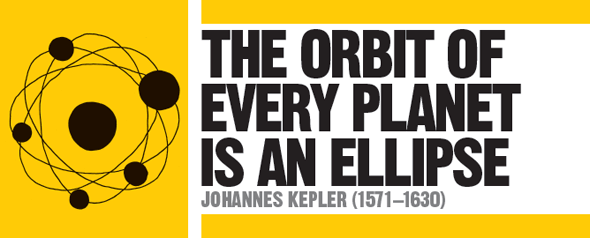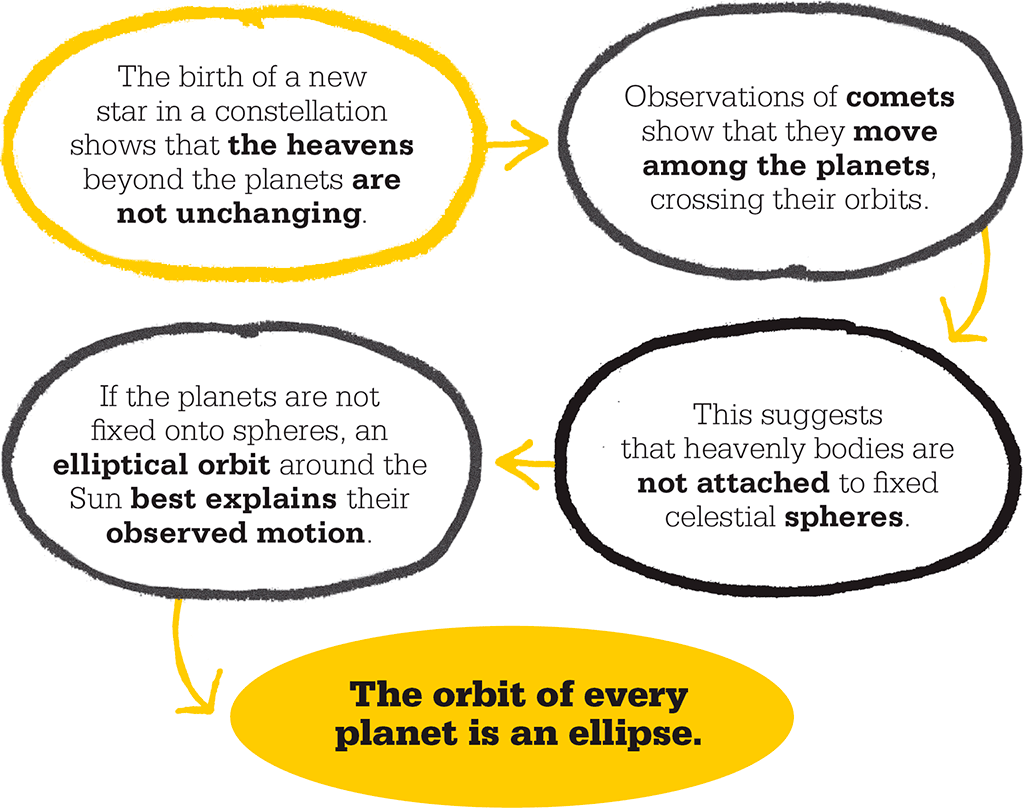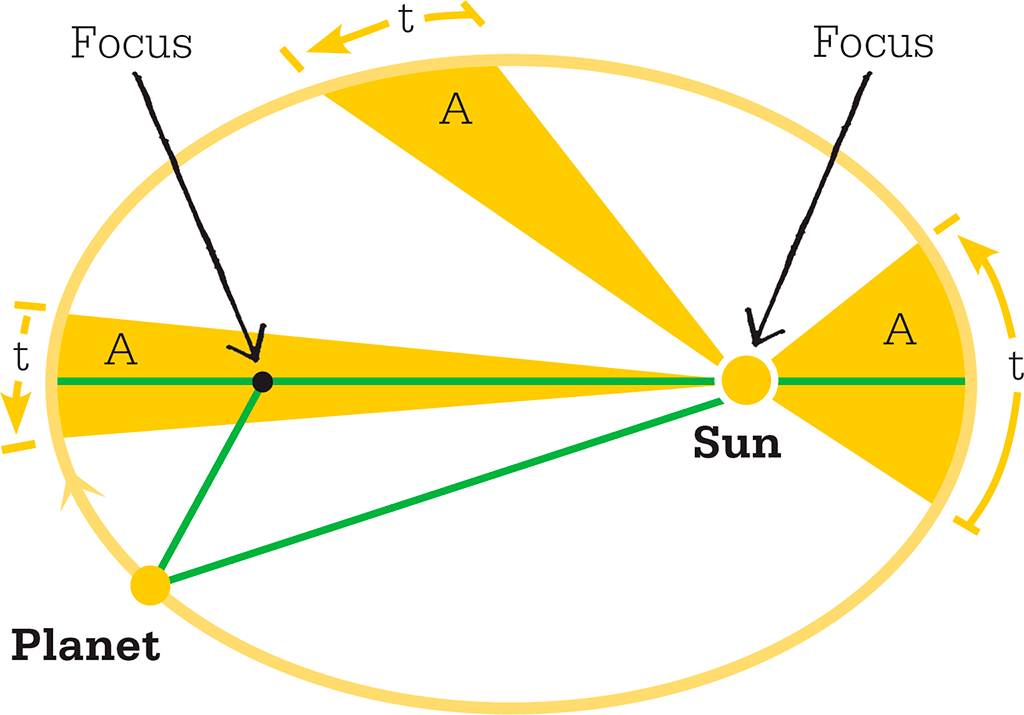
IN CONTEXT
Astronomy
150 CE Ptolemy of Alexandria publishes the Algamest, a model of the Universe built on the assumption that Earth lies at its centre and the Sun, Moon, planets and stars revolve around it in circular orbits on fixed celestial spheres.
16th century The idea of a Sun-centred cosmology begins to gain followers through the ideas of Nicolaus Copernicus.
1639 Jeremiah Horrocks uses Kepler’s ideas to predict and view a transit of Venus across the face of the Sun.
1687 Isaac Newton’s laws of motion and gravitation reveal the physical principles that give rise to Kepler’s laws.
While the work of Nicolaus Copernicus on celestial orbits, published in 1543, made a convincing case for a heliocentric (Sun-centred) model of the Universe, his system suffered from significant problems. Unable to break free from ancient ideas that heavenly bodies were mounted on crystal spheres, Copernicus had stated that the planets orbited the Sun on perfect circular paths, and was forced to introduce a variety of complications to his model to account for their irregularities.

Supernova and comets
In the latter half of the 16th century, Danish nobleman Tycho Brahe (1546–1601) made observations that would prove vital to resolving the problems. A bright supernova explosion seen in the constellation of Cassiopeia in 1572 undermined the Copernican idea that the Universe beyond the planets was unchanging. In 1577, Brahe plotted the motion of a comet. Comets had been thought of as local phenomena, closer than the Moon, but Brahe’s observations showed that the comet must lie well beyond the Moon, and was in fact moving among the planets. At a stroke, this evidence demolished the idea of “heavenly spheres”. However, Brahe remained wedded to the idea of circular orbits in his geocentric (Earth-centred) model.
In 1597, Brahe was invited to Prague, where he spent his last years as Imperial Mathematician to Emperor Rudolph II. Here he was joined by German astrologer Johannes Kepler, who continued Brahe’s work after his death.
Breaking with circles
Kepler had already begun to calculate a new orbit for Mars from Brahe’s observations, and around this time concluded that its orbit must be ovoid (egg-shaped) rather than truly circular. Kepler formulated a heliocentric model with ovoid orbits, but this still did not match the observational data. In 1605, he concluded that Mars must instead orbit the Sun in an ellipse – a “stretched circle” with the Sun as one of two focus points. In his Astronomia Nova (New Astronomy) of 1609, he outlined two laws of planetary motion. The first law stated that the orbit of every planet is an ellipse. The second law stated that a line joining a planet to the Sun sweeps across equal areas during equal periods of time. This means that the speed of the planets increases the nearer they are to the Sun. A third law, in 1619, described the relationship of a planet’s year to its distance from the Sun: the square of a planet’s orbital period (year) is proportional to the cube of its distance from the Sun. So a planet that is twice the distance from the Sun than another planet will have a year that is almost three times as long.
The nature of the force keeping the planets in orbit was unknown. Kepler believed it was magnetic, but it would be 1687 before Newton showed that it was gravity.

Kepler’s laws state that planets follow elliptical orbits with the Sun as one of the two foci of the ellipse. In any given time, t, a line joining the planets to the Sun sweeps across equal areas (A) in the ellipse.
JOHANNES KEPLER

Born in the city of Weil der Stadt near Stuttgart, southern Germany, in 1571, Johannes Kepler witnessed the Great Comet of 1577 as a small child, marking the start of his fascination with the heavens. While studying at the University of Tübingen, he developed a reputation as a brilliant mathematician and astrologer. He corresponded with various leading astronomers of the time, including Tycho Brahe, ultimately moving to Prague in 1600 to become Brahe’s student and academic heir.
Following Brahe’s death in 1601, Kepler took on the post of Imperial Mathematician, with a royal commission to complete Brahe’s work on the so-called Rudolphine Tables for predicting the movements of the planets. He completed this work in Linz, Austria, where he worked from 1612 until his death in 1630.
Key works
1596 The Cosmic Mystery
1609 Astronomia Nova (New Astronomy)
1619 The Harmony of the World
1627 Rudolphine Tables
See also: Nicolaus Copernicus • Jeremiah Horrocks • Isaac Newton